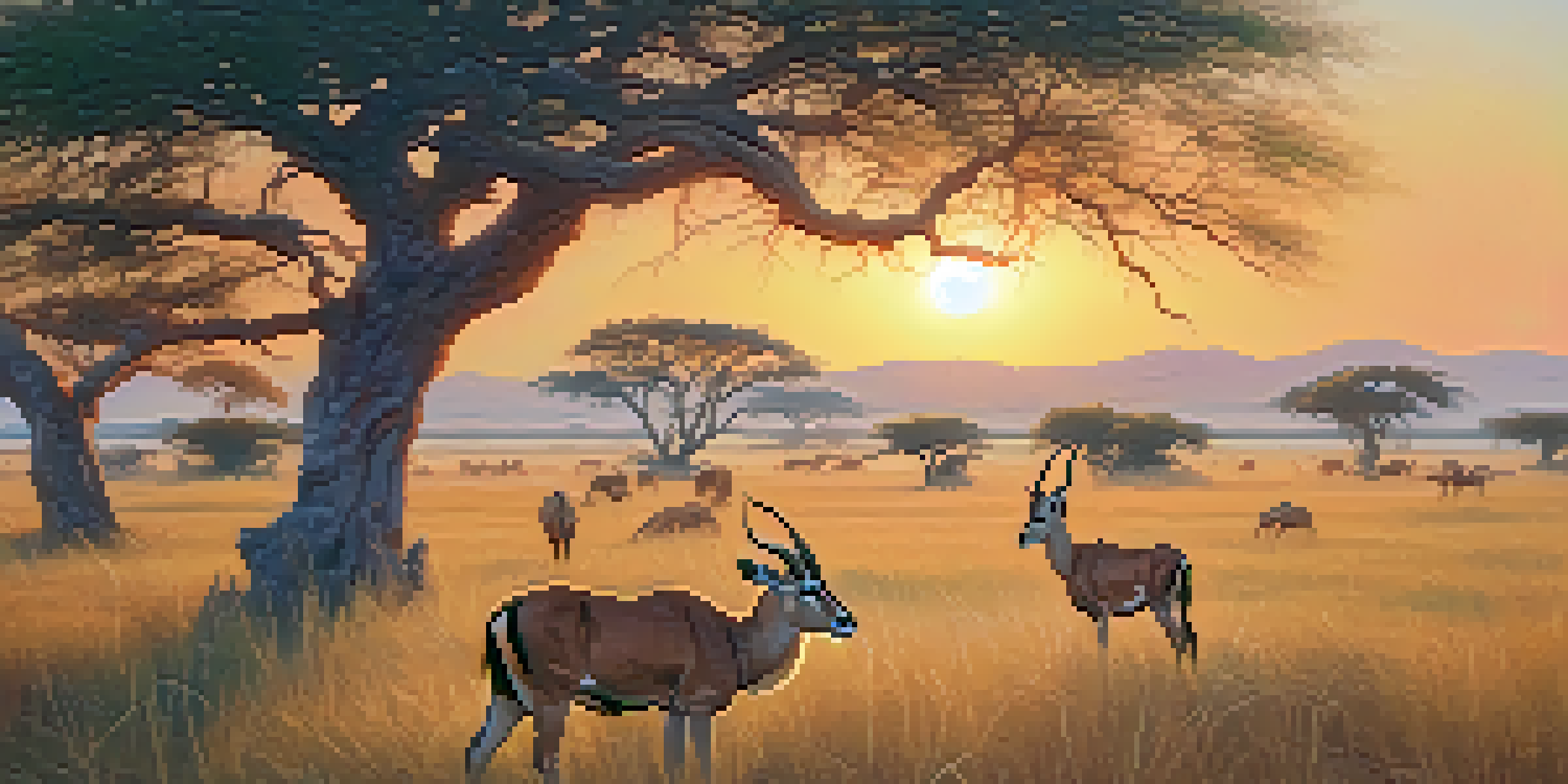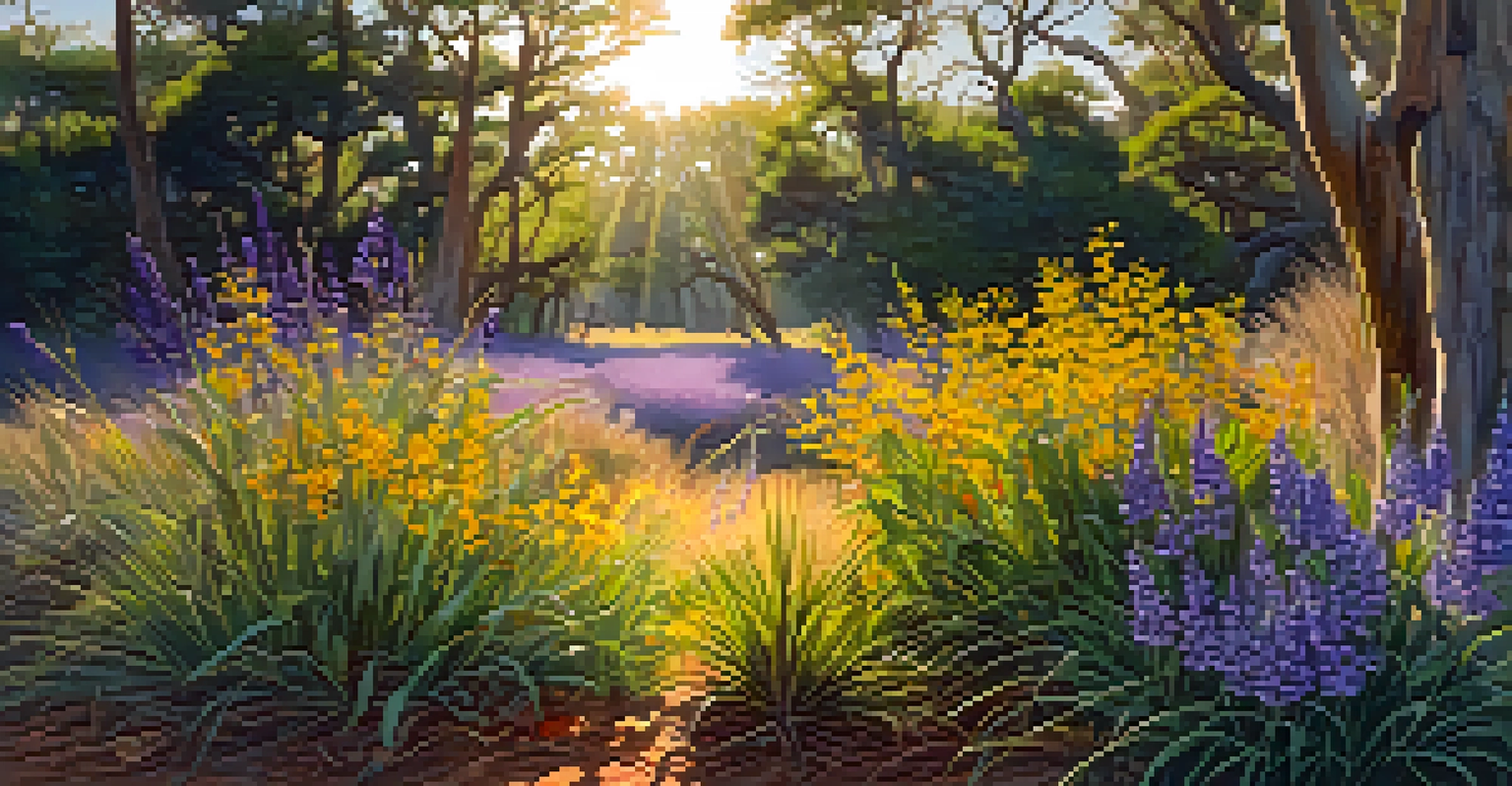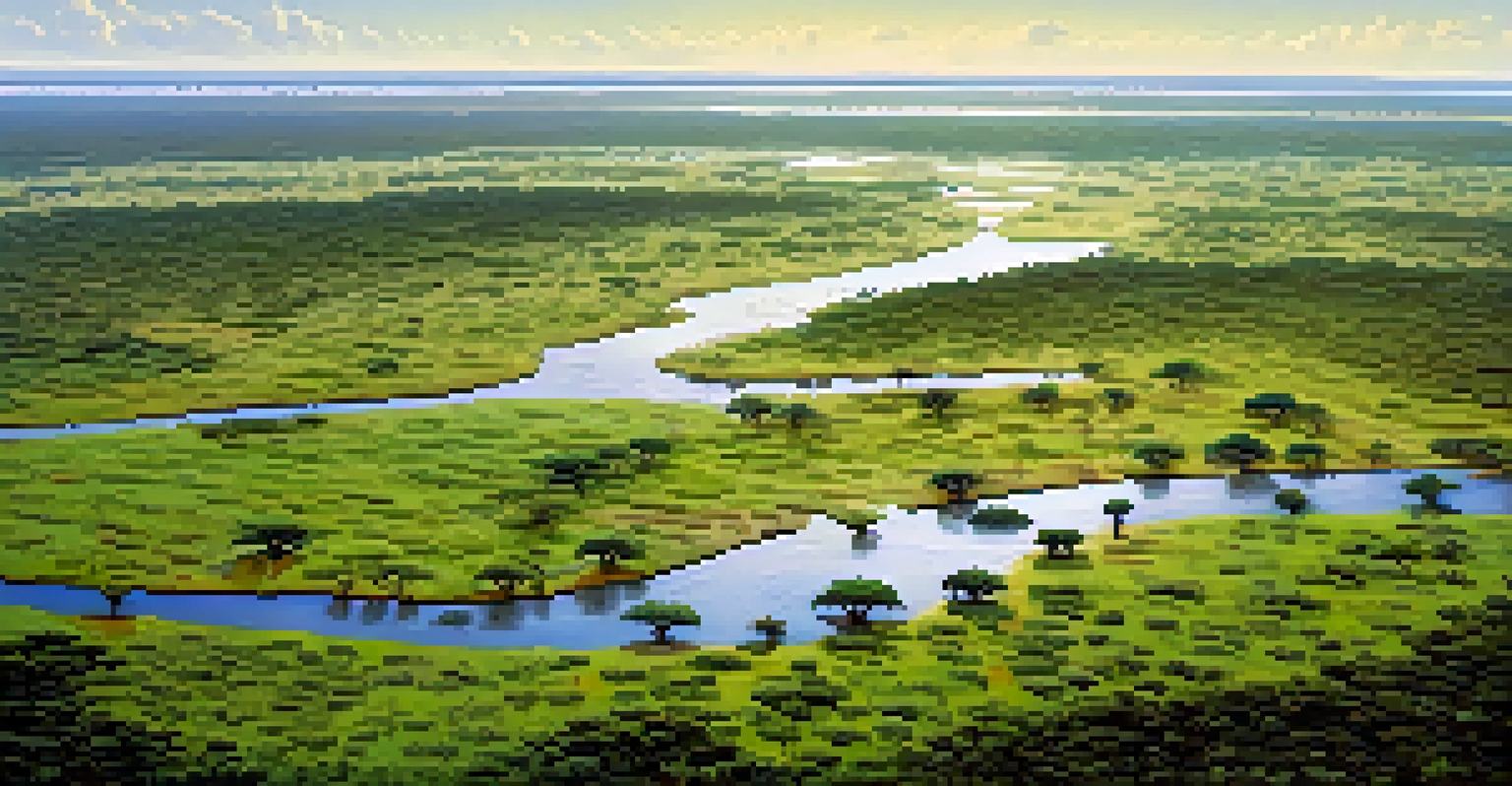Impact of Climate Change on Savannah's Natural Ecosystems

Understanding Savannah's Unique Ecosystem
Savannahs are unique ecosystems characterized by open grasslands dotted with trees. They support a wide variety of wildlife, including herbivores like antelopes and predators like lions. The balance between grasses and trees is crucial for maintaining biodiversity and ecological health.
The greatest threat to our planet is the belief that someone else will save it.
These ecosystems thrive in regions with seasonal rainfall and warm temperatures, which create the perfect environment for both plant and animal life. However, this delicate balance is now threatened by climate change, which alters weather patterns and disrupts traditional habitats.
As temperatures rise and rainfall becomes more erratic, the very fabric of Savannah ecosystems is at risk. This not only affects the flora and fauna but also the communities that depend on these natural resources for their livelihoods.
Increased Temperatures and Their Consequences
One of the most immediate effects of climate change is the rise in average temperatures. In Savannah regions, higher temperatures can lead to increased evaporation rates, resulting in drier conditions. This shift can severely impact the growth of grasses and other plants that depend on consistent moisture.

As the vegetation changes, the herbivores that rely on these plants for food may struggle to find enough sustenance. For instance, species like zebras and wildebeests may migrate further in search of food, disrupting local ecosystems and food chains.
Climate Change Threatens Savannahs
Savannah ecosystems are increasingly at risk from climate change, affecting biodiversity and local wildlife.
Moreover, the stress on plant life can lead to a decline in biodiversity. When certain species dominate due to their resilience against heat, it can create a monoculture, which is less stable and more vulnerable to pests and diseases.
Changing Rainfall Patterns and Their Impact
Climate change is also causing shifts in rainfall patterns, making some areas wetter and others drier. In the Savannah, this unpredictability can lead to prolonged droughts or intense flooding, both of which can devastate the ecosystem. For example, if rainfall is delayed during the growing season, plants may not have enough time to flourish.
In every walk with nature one receives far more than he seeks.
When flooding occurs, it can wash away seeds and young plants, stunting the growth of vegetation. This disruption can have a cascading effect on the entire ecosystem, affecting everything from soil quality to animal populations.
Additionally, altered rainfall patterns can lead to increased competition among species for limited resources. Species that are less adaptable to these changes may decline, further threatening biodiversity in the Savannah.
Wildfires: A Growing Threat in Savannahs
Wildfires are a natural part of many Savannah ecosystems, helping to rejuvenate the land and promote new growth. However, climate change is increasing the frequency and intensity of these fires, often leading to ecological devastation. Higher temperatures and prolonged dry spells create the perfect conditions for wildfires to ignite.
These fires can destroy vast areas of habitat, leading to loss of wildlife and plant species. For example, if a fire sweeps through, it can take years for the ecosystem to recover fully, and some species may never return.
Wildfires Become More Frequent
Rising temperatures contribute to more frequent and intense wildfires, leading to ecological devastation and habitat loss.
Furthermore, frequent fires can alter the composition of plant communities, favoring fire-resistant species over others. This change can impact the entire food web, as the animals that rely on diverse plant life may struggle to survive.
Impact on Wildlife: Shifts in Habitats and Migration
As climate changes, many animal species are forced to adapt to new conditions, often resulting in shifts in their natural habitats. For example, some mammals may move to higher elevations or cooler areas in search of suitable environments. This migration can disrupt established ecosystems and create competition between native and incoming species.
Bird species, too, are experiencing changes in their migratory patterns due to altered seasonal cues. This can lead to mismatches in timing, where birds arrive at breeding grounds when food sources are scarce, affecting their populations.
Such shifts not only threaten individual species but can also destabilize entire ecosystems. When species that play crucial roles in their habitats relocate or decline, it can cause a ripple effect throughout the ecosystem.
Human Impacts: Local Communities and Economies
The effects of climate change on Savannah ecosystems extend beyond wildlife; local human communities are also significantly impacted. Many communities rely on the natural resources provided by these ecosystems for their livelihoods, including farming, tourism, and fishing. As ecosystems degrade, these communities face economic challenges and food insecurity.
Additionally, the loss of biodiversity can impact cultural practices tied to local wildlife and landscapes. For instance, indigenous communities may find their traditional practices and beliefs challenged as species decline or disappear.
Human Communities Face Challenges
Local communities dependent on Savannah resources are facing economic and food security challenges as ecosystems degrade.
Adaptation strategies become vital for these communities as they navigate the changing environment. Sustainable practices and conservation efforts can help mitigate some of the impacts of climate change, ensuring that both people and ecosystems can thrive together.
Conservation Efforts: Protecting Savannah Ecosystems
To combat the impact of climate change on Savannah ecosystems, various conservation efforts are underway. These initiatives focus on preserving native species, restoring habitats, and promoting sustainable land management practices. By protecting these ecosystems, we can help maintain their resilience against climate change.
Community involvement is crucial in these efforts, as local residents often have valuable knowledge about their environments. Engaging these communities in conservation initiatives can lead to more effective and sustainable outcomes, ensuring that their needs are met while safeguarding biodiversity.

Furthermore, raising awareness about the importance of Savannah ecosystems can inspire more people to take action. Education programs and outreach can empower individuals to participate in conservation efforts, fostering a collective commitment to preserving these vital habitats.